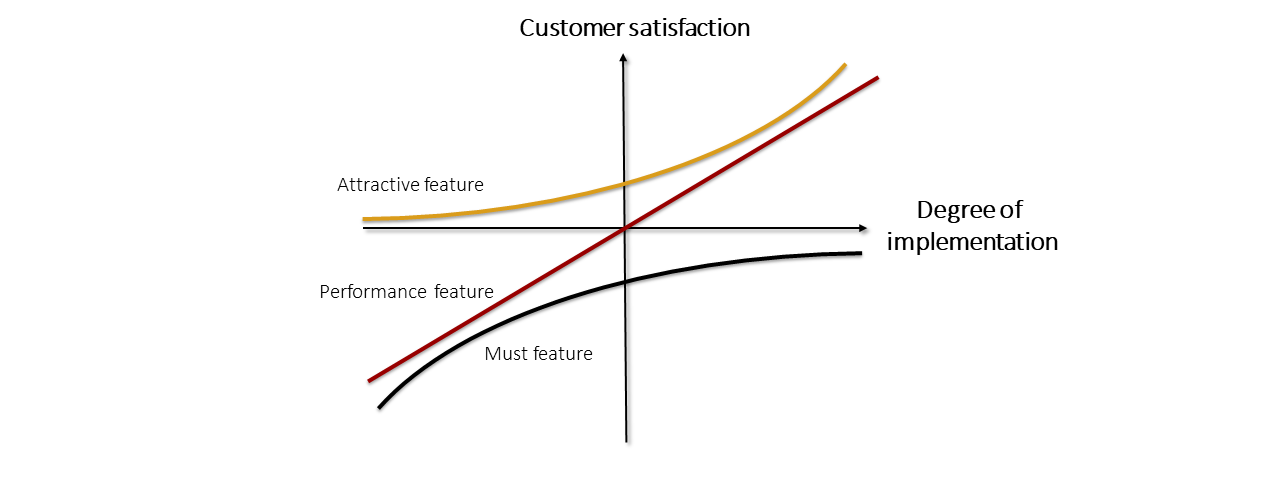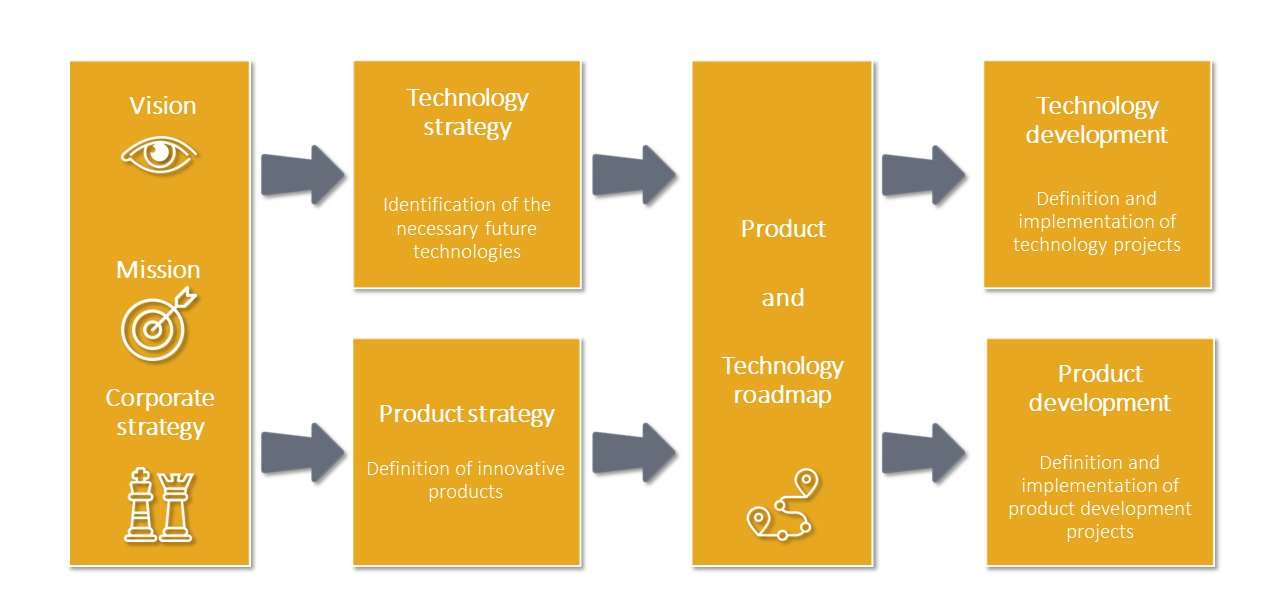Increase the product's value
Only a company that knows and understands itself and its customers can develop a valuable product. It has long been clear in many companies that this is an interdisciplinary task. However, such distributed responsibility must be assigned in a structured way in many sub-processes and managed properly over the entire product development phase. The more effective a company succeeds in this regard, the greater the product’s success in the market will be.

Directions of Optimization
There are three approaches to increasing customer value:
- Know and understand the customer.
- Manage customer requirements.
- Implement customer requirements.
Know and understand the customer
The key to a product’s success is the right level of functional features in the right product quality. According to the Kano model, these are “Must”, “Performance” or “Attractive” features – and a well-positioned product contains all of them. A challenge for all companies is to define what is “right” for their customers, i.e. to bring the product exactly to the point by balancing different features. “Must” and “Performance” features can usually be neatly balanced and defined through a customer analysis or survey. For the evaluation of “Attractive” features – these are usually innovative ideas – a direct survey of customers is of limited help given that the feature usually has to be developed to an advanced stage of maturity before a customer can make a well-founded statement about it. For such features, it may also be necessary to first create demand among customers through sales and marketing before (or during) the market launch. Successful companies, therefore, already look to the capability of their organisation when creating the product idea. Just as a development department can be overtaxed when it comes to providing technologically complex products at market-driven costs, it can also be too demanding to expect adequate additional revenue for innovative product features by sales and marketing departments. Both would be clearly reflected in the economic results of the company.
The requirements that are either discussed or defined must then be dynamically managed in a requirement management process with product requirements and functional specifications or an agile product backlog, at least on a temporary basis. An increasing number of companies are realising that this dynamic phase stretches all the way to series production and beyond, which supports the trend towards agile product development.
The challenge that all disciplines involved in the interdisciplinary product development process have to move closer to both the internal and end customer, results in changes in work organisation and increasing agility. Only those who have understood customer requirements can strike the right balance between cost and value in an environment that comprises various, sometimes controversial, manifestations of requirements. The early involvement of purchasing and production, whether in an agile or traditional organisation, is equally crucial for ensuring optimal product costs.
Enabling the organisation to innovate quickly
A carefully defined product and technology strategy sets the course for an optimal range of functions in a form that is appreciated by the customer. With the development of this strategy, the company creates guidelines and preconditions for the rapid implementation of innovations.
With the product strategy, the company makes decisions on core questions regarding:
- product design and product variants
- differentiation and unique selling propositions
- product innovation
- life cycle and succession planning
- locational aspects for production and product development
The technology strategy complements these plans by selecting (and fixing) the time horizons of technologies for production and development in which the company wishes to achieve a targeted level of excellence. If necessary, cooperation partners and procurement sources are also incorporated into these plans.
The result of the product and technology strategy – in combination with the specific requirements placed on the performance characteristics of the products in question – leads to a product and technology portfolio. A roadmap describes the path along a defined time horizon, which projects need to be worked on and how they need to be synchronized, in order that the selected technologies are available to accommodate the desired functional features in the products.
The benefit to you
- You strengthen the focus on the customer.
- Changes to product requirements are dynamically evaluated and flow smoothly into the product development process.
- Inter-disciplinarity ensures a balance between effort and customer benefit.
- Innovations are quickly converted into customer benefits.


